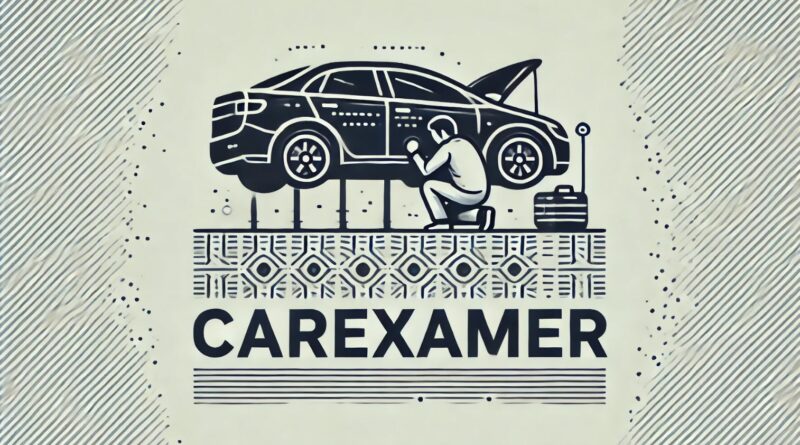Guide How to Check a Used Car for Accident damage
Here’s a simple guide to help you check a used car for damage or signs of an accident, so you can drive off with confidence. Buying a used car can be a great way to save money, but it’s easy to end up with a lemon if you’re not careful. One of the biggest things to watch out for is hidden damage from previous accidents. Fortunately, with a little know-how and attention to detail, you can spot potential problems before you buy.
1. Start with a Vehicle History Report
Before you even step foot on the lot or meet up with the seller, run a vehicle history report. Websites like CARFAX or AutoCheck can tell you if the car’s been in any major accidents, whether it has had major repairs, and how many owners it’s had.
- Accidents and Repairs: If the car’s been in a crash, it should show up here.
- Ownership History: If the car’s been through a lot of owners, that might be a red flag about how well it’s been cared for.
This isn’t foolproof, but it’s a great place to start.
2. Take a Close Look at the Exterior
Once you have the car in front of you, give it a thorough once-over. There are plenty of visible clues that can reveal if a car’s been in an accident.
a. Check for Mismatched Paint
Stand back and look at the car from different angles. If you notice any areas where the paint doesn’t quite match—either in color or texture—that part may have been repainted after a repair. This is a common way to cover up body damage.
b. Look at the Gaps Between Panels
The spaces between the doors, hood, and trunk should be even and aligned. If one side has a bigger gap than the other, it could mean the car was poorly repaired after a collision.
c. Scan for Dents and Scratches
While small scratches or dings are normal on a used car, large dents or areas that seem uneven could be signs of more serious damage.
d. Inspect the Headlights and Taillights
If one light looks newer than the other or if they don’t quite match, the car may have been in an accident that damaged one of the lights.
3. Pop the Hood and Check the Engine Bay
The engine compartment can tell you a lot about a car’s history. Look for these signs of potential damage:
a. Frame Damage
Look at the metal parts surrounding the engine. If you notice any bends, dents, or weld marks, it could mean the car has been in a serious accident.
b. New Parts
New parts can be a good thing, but if there are too many shiny new pieces under the hood, it might mean the car needed significant repairs after a crash.
c. Check the Bolts
Look at the bolts around the fenders and engine. If they’ve been removed or replaced, the car may have had body parts taken off for repairs.
4. Check Underneath the Car
Don’t forget to take a look at the undercarriage. This part of the car can reveal a lot about its condition.
a. Rust and Corrosion
If there’s a lot of rust or corrosion, it could mean the car wasn’t well maintained or has been exposed to water damage (like from flooding).
b. Bent or Welded Areas
Check for any areas that seem bent or freshly welded. This could be a sign that the car was in a crash and had some major structural repairs.
5. Inspect the Tires
Take a close look at the tires. Uneven tire wear could indicate alignment issues, which sometimes happen after an accident. If one side of the tires is more worn than the other, there could be something wrong with the car’s suspension or alignment.
6. Test the Suspension
Take the car for a test drive and pay attention to how it feels on the road. Here are a few things to watch for:
- Bumpy Ride: If the car feels rough or wobbly, there may be suspension damage.
- Pulling to One Side: If the car pulls to the left or right while driving straight, it could be an alignment issue caused by an accident.
After the drive, push down on each corner of the car. If the car bounces more than once before settling, the suspension might be worn out.
7. Look Inside the Car
The interior can offer some clues about the car’s history, too.
a. Water Damage
Check for any signs of water damage, like stains on the carpet, musty smells, or rust under the seats. This could indicate flood damage, which can cause long-term electrical and mechanical problems.
b. Airbag Check
Look closely at the dashboard, especially the area where the airbag is housed. If the cover looks newer than the rest of the dashboard or doesn’t fit quite right, the airbags may have been deployed and replaced after an accident.
8. Get a Professional Inspection
Even if everything looks good to you, it’s always a good idea to have a mechanic inspect the car before you buy it. They can check for things you might have missed and give you a better idea of the car’s overall condition.
Final Thoughts
Buying a used car can save you a lot of money, but only if you’re smart about it. By following these steps, you can avoid cars with hidden damage or a shady past. If something doesn’t feel right, or if you spot any signs of previous accidents, don’t hesitate to walk away. There are plenty of good used cars out there, so take your time and make sure you’re getting a vehicle that’s safe, reliable, and worth your investment.
Buying a used VW. Buying used vauxhall, BMW, Jaguar, Ford, Volvo, Range rover, Bentley, Aston Martin, Porsche, Ferrari, Lamborghini, Maserati, Hyundai, Tesla, Honda, Pagani

